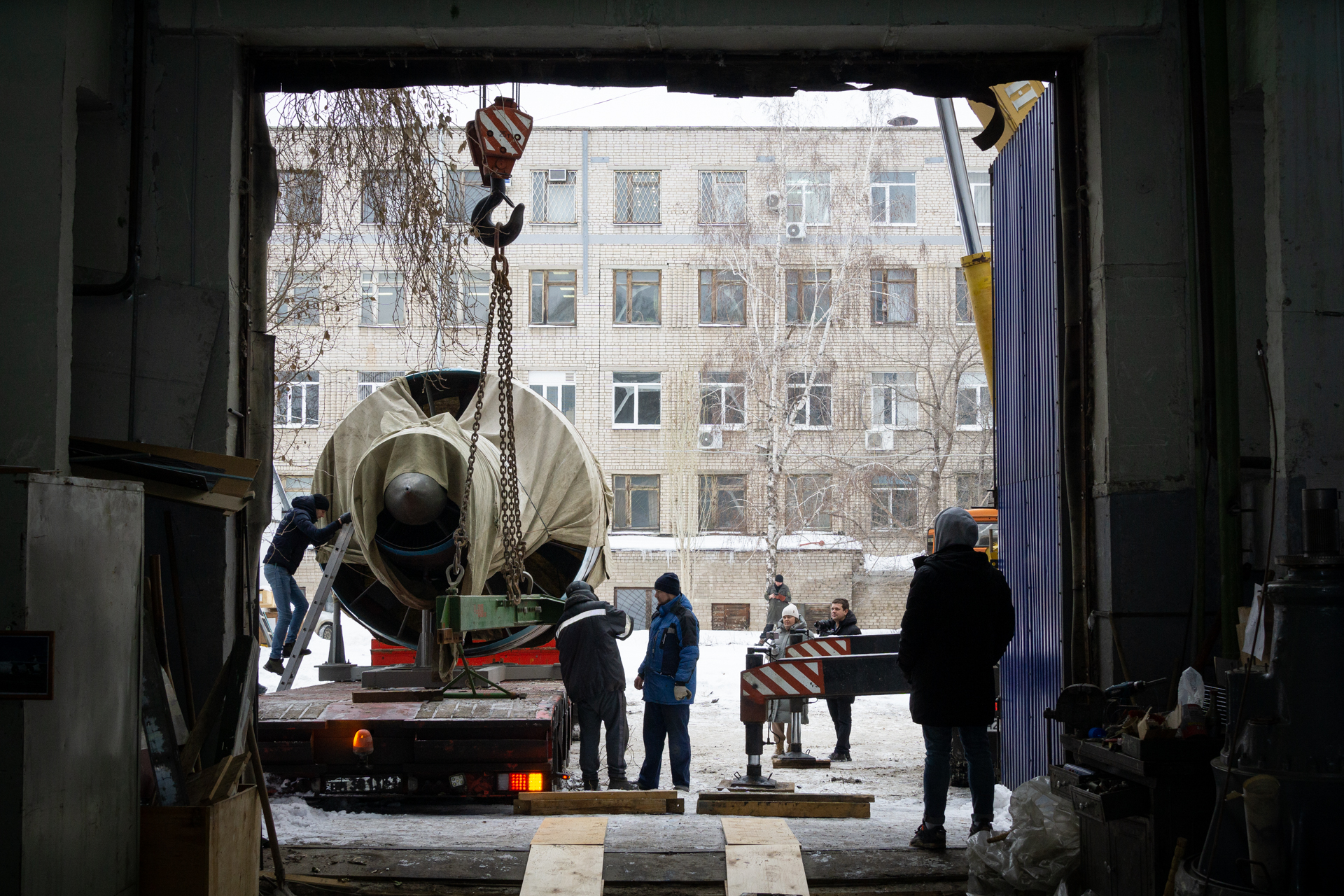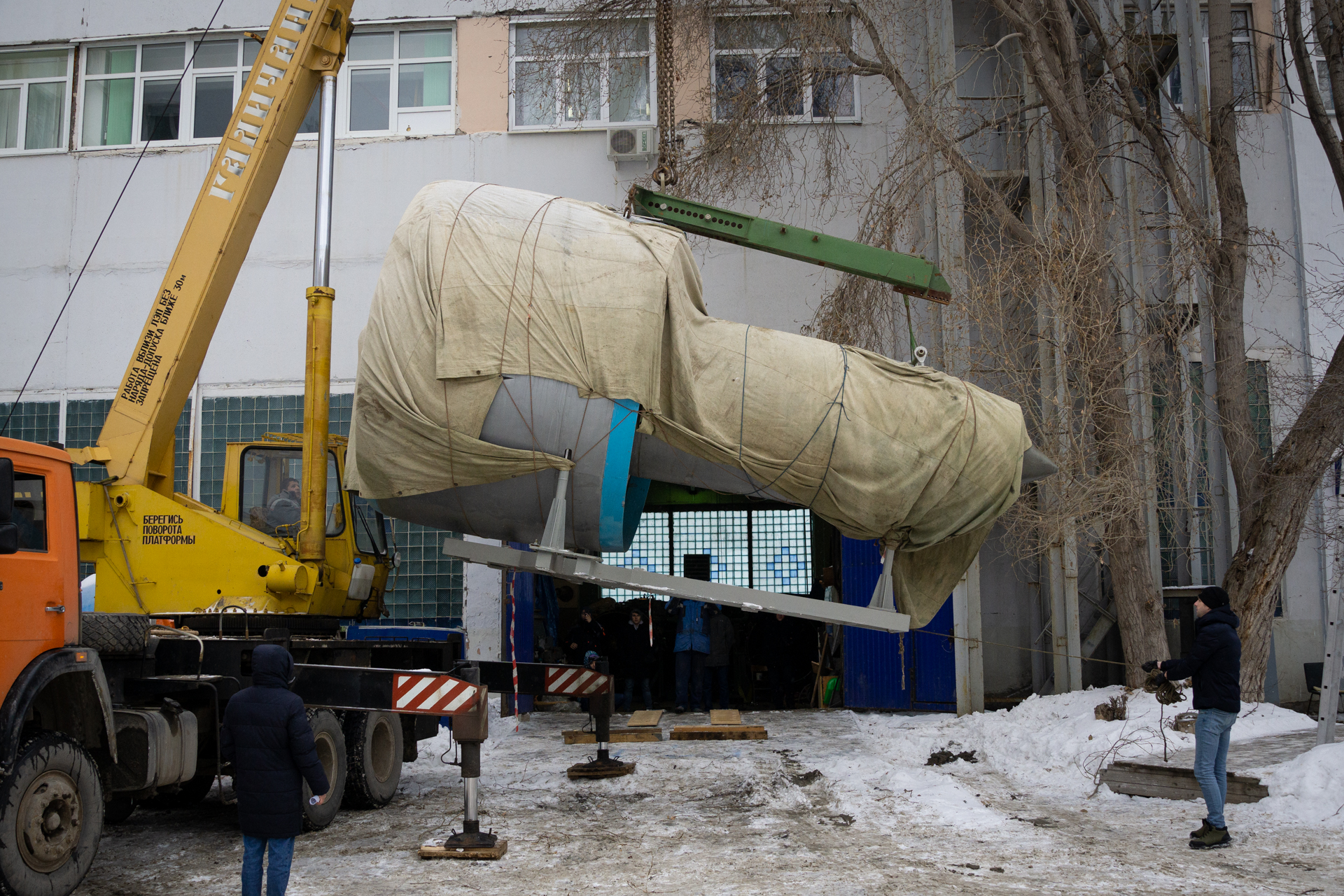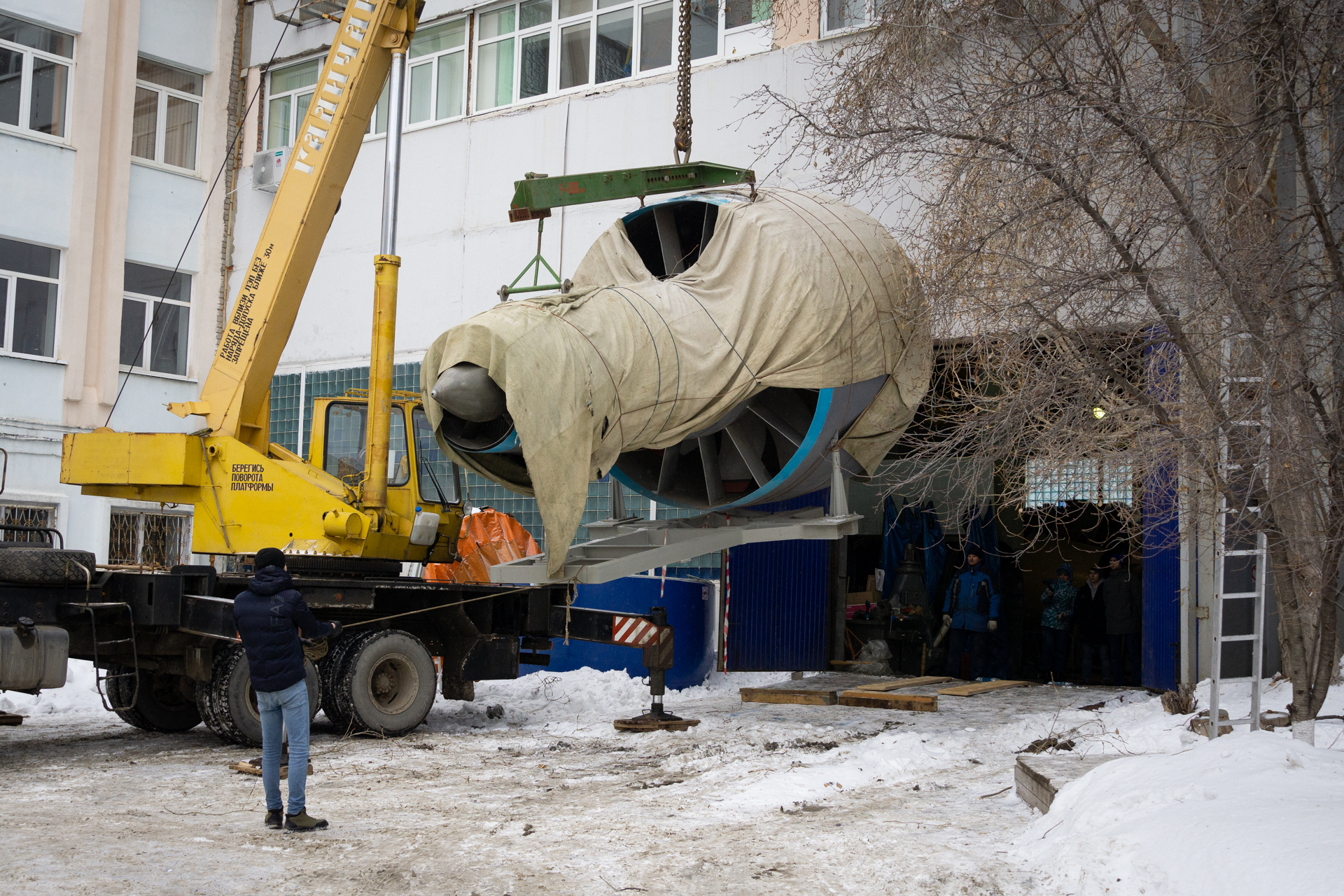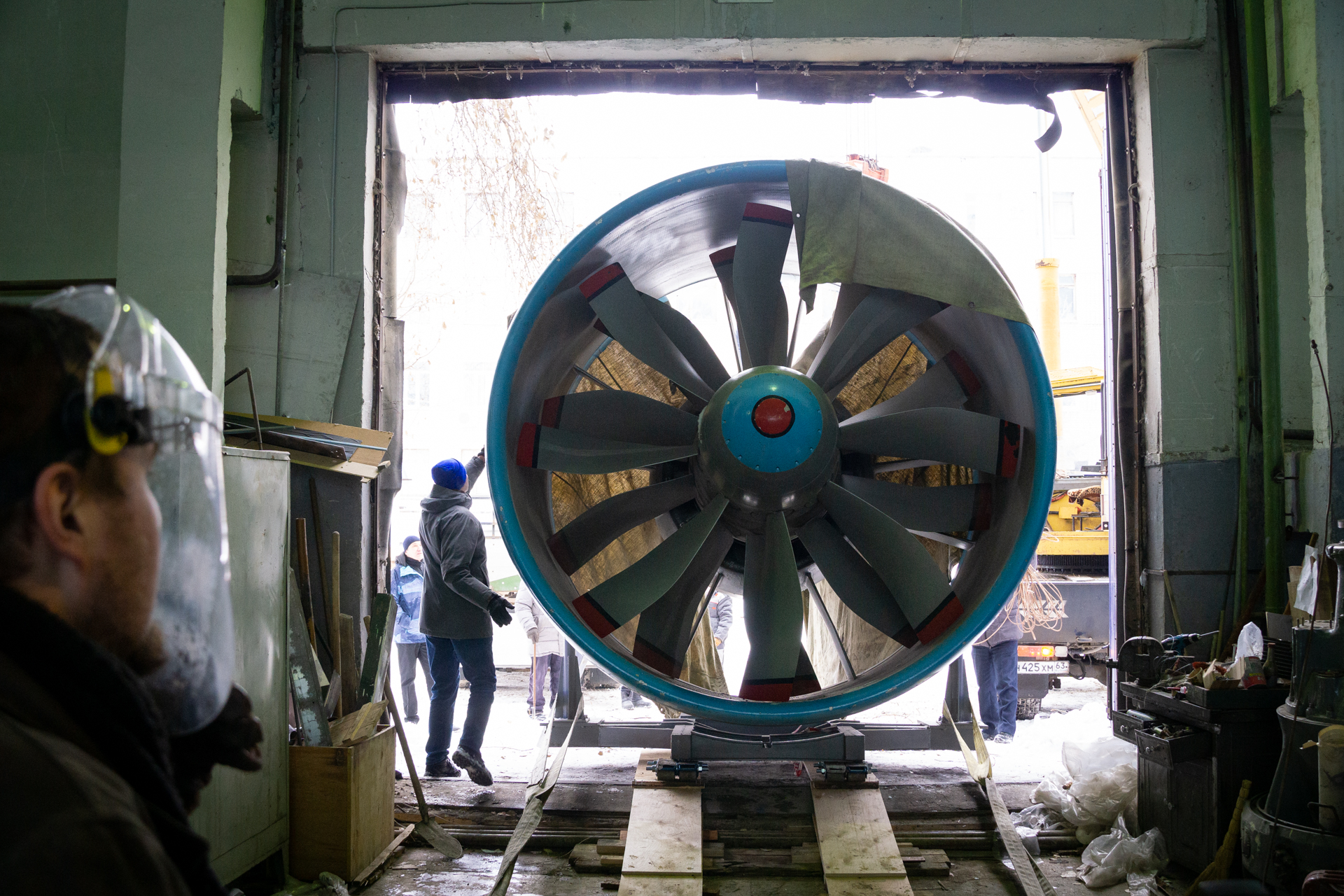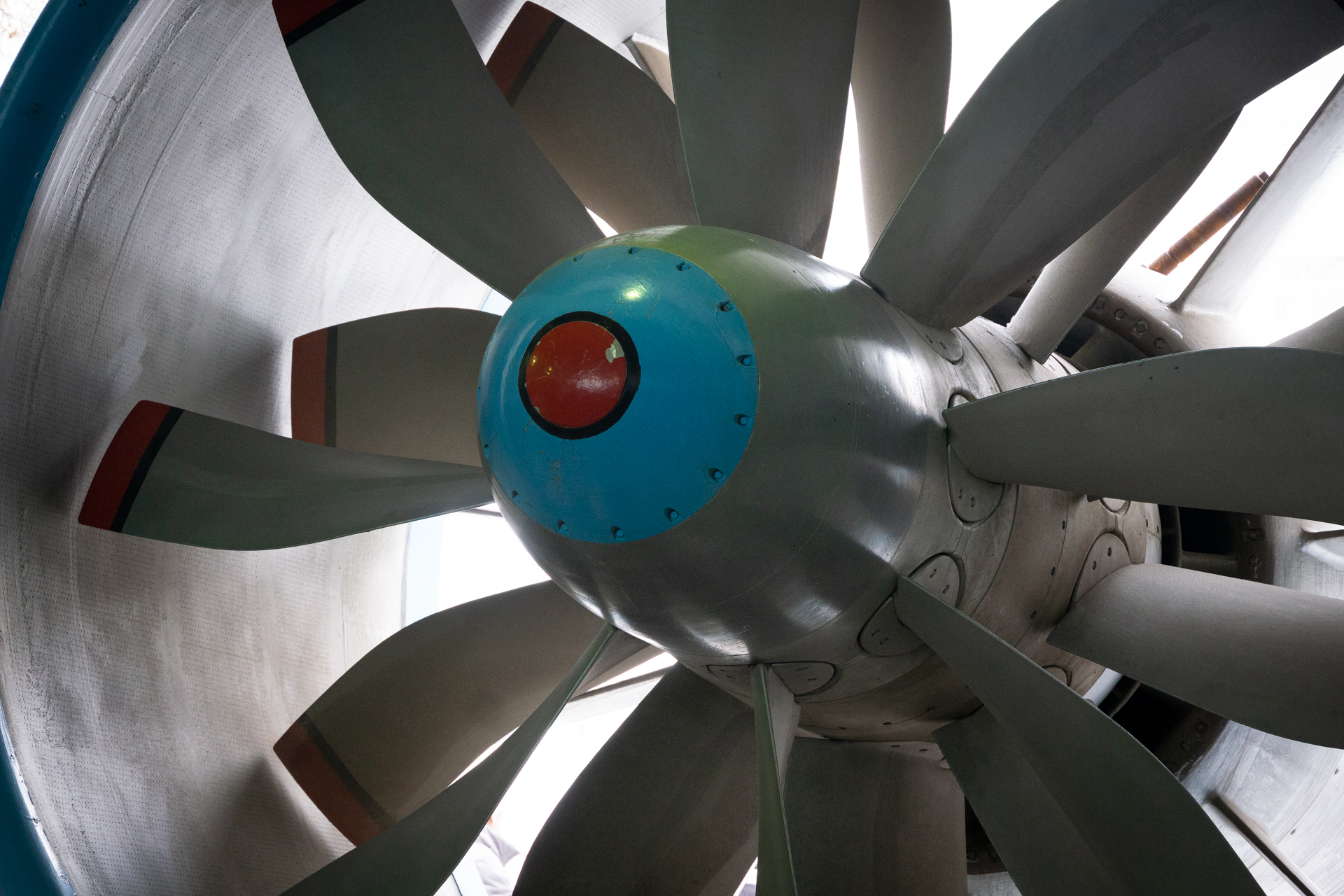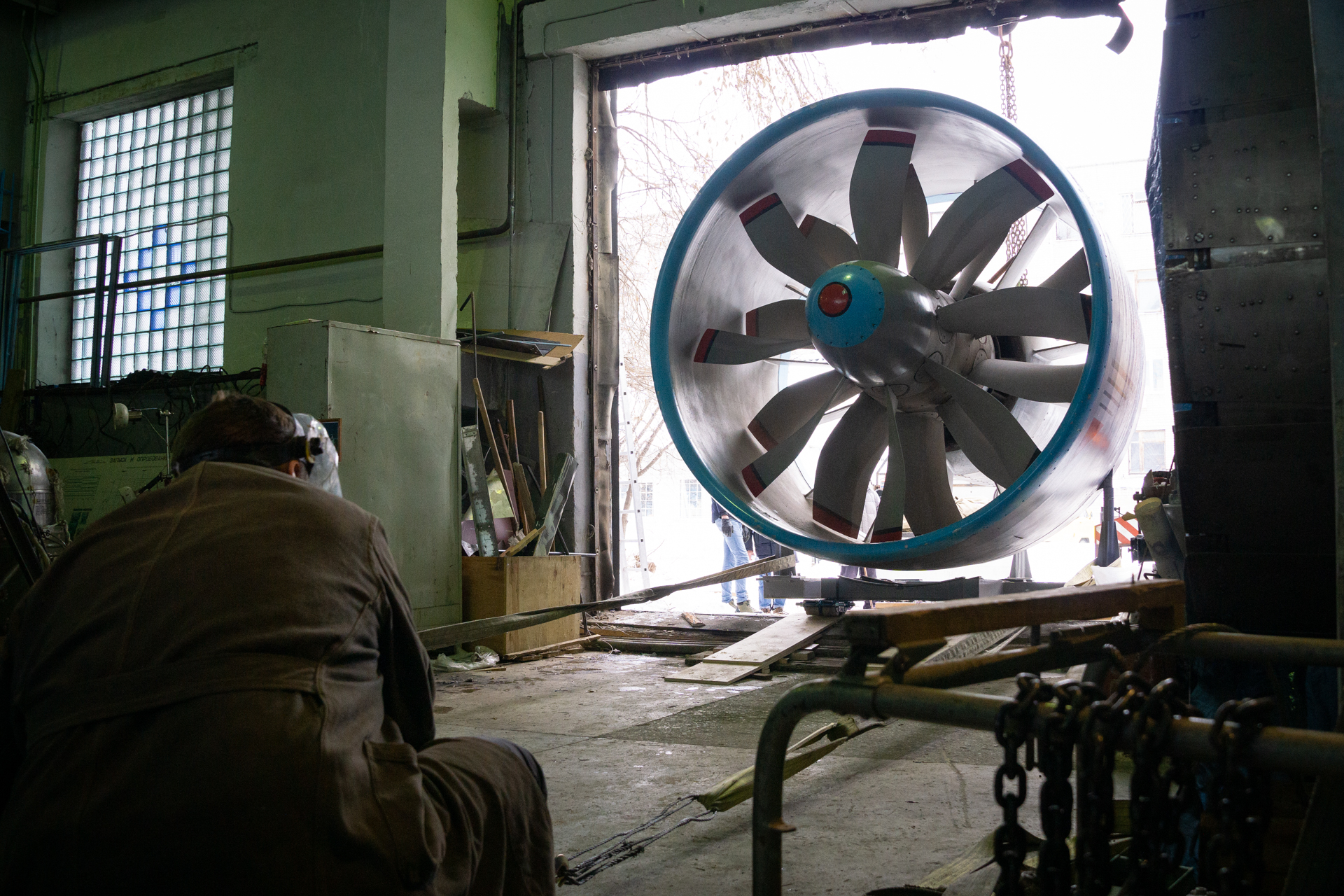Samara enterprise of Rostec United Engine Corporation UEC-Kuznetsov handed over a mockup of the experimental engine NK-93 to Samara University. The mockup is based on an engine taken from the wing of the IL-76LL flying laboratory. The 6-meter engine weighing over 3.5 tons will become a training aid for future designers - students of the Institute of Engine and Power Plant Engineering.
On February 2, a full-size mockup of the NK-93 experimental aircraft engine was delivered from UEC-Kuznetsov production site to the Aviation Engines History Centre (AEHC) at Samara University. Hundreds of Samara citizens could observe the trailer with the valuable cargo on its 10-kilometer route from the factory entrance to the university campus. The loading began at half past ten in the morning, and by three o’clock in the afternoon the engine had already taken its intended place in one of the AEHC training rooms.
“The mockup was handed over as part of the Advanced Aerospace Engineering School development program, which Samara University implements with support of industrial partners. NK-93 is a unique propfan engine in many ways ahead of its time. It includes a forward-looking scheme and a number of original design solutions. Many of these ideas are now being used in UEC-Kuznetsov developments. Studying the engine will be insightful for novice designers - NK-93 potentialities will trigger their creativity and serve as the basis for creating a fundamentally new product using new technologies and materials,” said Pavel Chupin, General Designer of UEC-Kuznetsov PJSC.
Handover of the unique engine was another step in strengthening the long-standing ties between the university and the industrial enterprise. UEC-Kuznetsov and Samara University are linked by decades of fruitful cooperation. From 1969 to 1978, the Department of Aircraft Engine Construction and Design of the University was headed by the General Designer of the company, Academician N.D. Kuznetsov. For many years the backbone of the plant’s engineering staff has been made up of the University graduates.
Today UEC-Kuznetsov is one of the key industrial partners of Samara University in implementing the Advanced Aerospace Engineering School project and the Wings of Rostec program for training capable personnel for the engine industry. The Aviation Engines History Centre plays a special role in the training of engine designers.
“AEHC is simultaneously a museum and a research and education center where students study the history and patterns of development of aerospace engine technology. Our exhibits are full-scale models of aircraft and rocket engines. Understanding different design approaches, the opportunity to study in detail the engine embodied “in iron” significantly expands the outlook of future engineers and shows them the possibility of combining different technologies in the process of creating the engines of the future. It is quite likely that NK-93 handed over today will inspire future designers to create new advanced engines, thanks to which our country will not only equal but surpass the world level,” said Professor Vladimir Zrelov, AEHC director.
For reference:
NK-93 is an aviation three-rotor propfan engine with a super-high bypass ratio, designed for large passenger and cargo capacity airplanes.
Design of NK-93 gas generator was started in 1988 at the design bureau under the guidance of General Designer Academician N.D. Kuznetsov.
In 1989, the prototype was first tested. It was named NK-92 and developed for the project of IL-96-200 long-range passenger airplane.
NK-93 was tested at the Gromov Flight Research Institute using IL-76LL flying laboratory.
An aircraft with NK-93 engine does not exceed the noise level regulated by Chapter III of the ICAO standard.
NK-93 engine was not produced serially.
Specifications:
Thrust 18 tf
Specific fuel consumption at cruising mode (H=11 km, M=0.75)... 0.49 kg/kgf·h
Bypass ratio 16.06
Overall pressure ratio 28.85
Turbine inlet temperature 1520 K
Aviation Engines History Centre (AEHC)
Samara University
Created in 1991 on the basis of an engine class of the Department of Aircraft Engine Construction and Design. Today AEHC has the world’s largest collection with over one hundred authentic items of aircraft and rocket engines.
These are not museum exhibits, but objects for study and teaching aids for students. AEHC is a training ground where students can observe how various units of a gas turbine aircraft engine are designed and meant to interact. Here compressor and turbine rotors “come to life” and begin to rotate, and reveal what is usually hidden from view under the hull.
AEHC collection includes the following historical and unique items:
• The world’s first serial gas-turbine aircraft engine Jumo-004 made in Germany during World War II.
• The most powerful serial turboprop engine in the world - NK-12M for the strategic bomber Tu-95, anti-submarine Tu-142, long-range airliner Tu-114, heavy transport aircraft An-22.
• D-18T giant engine - it is almost 5.5 meters long and 2.3 meters in diameter, weighs 4.1 tons, and is installed on An-124 Ruslan and An-225 Mriya super-heavy transport aircraft.
• The world’s first liquid hydrogen-fueled cryogenic aviation engine - NK-88. It was installed on an experimental Tu-155 aircraft that performed its maiden flight on April 15, 1988.
UEC-Kuznetsov PJSC is a leading Russian engine-building enterprise that designs, manufactures, repairs and maintains aircraft, ground and rocket engines. It is a part of the United Engine Corporation. The enterprise includes three key units - a design bureau, an engine serial production plant, and a unique testing facility.
United Engine Corporation JSC (part of Rostec State Corporation) is an integrated structure that specializes in the development, serial production and after-sales service of engines for military and commercial aviation, space programs and the navy, as well as the oil and gas and power industries.
Rostec State Corporation is the largest industrial company in Russia. It unites about 800 scientific and industrial organizations in 60 regions of the country. Its key areas of activity are aircraft engineering, radioelectronics, medical technology, innovative materials, etc. The corporation’s products are shipped to more than 100 countries of the world. Almost a third of the company’s revenue comes from export of high-tech products.
Photo: Nikita Murzakov
 RU
RU  EN
EN  CN
CN  ES
ES 
